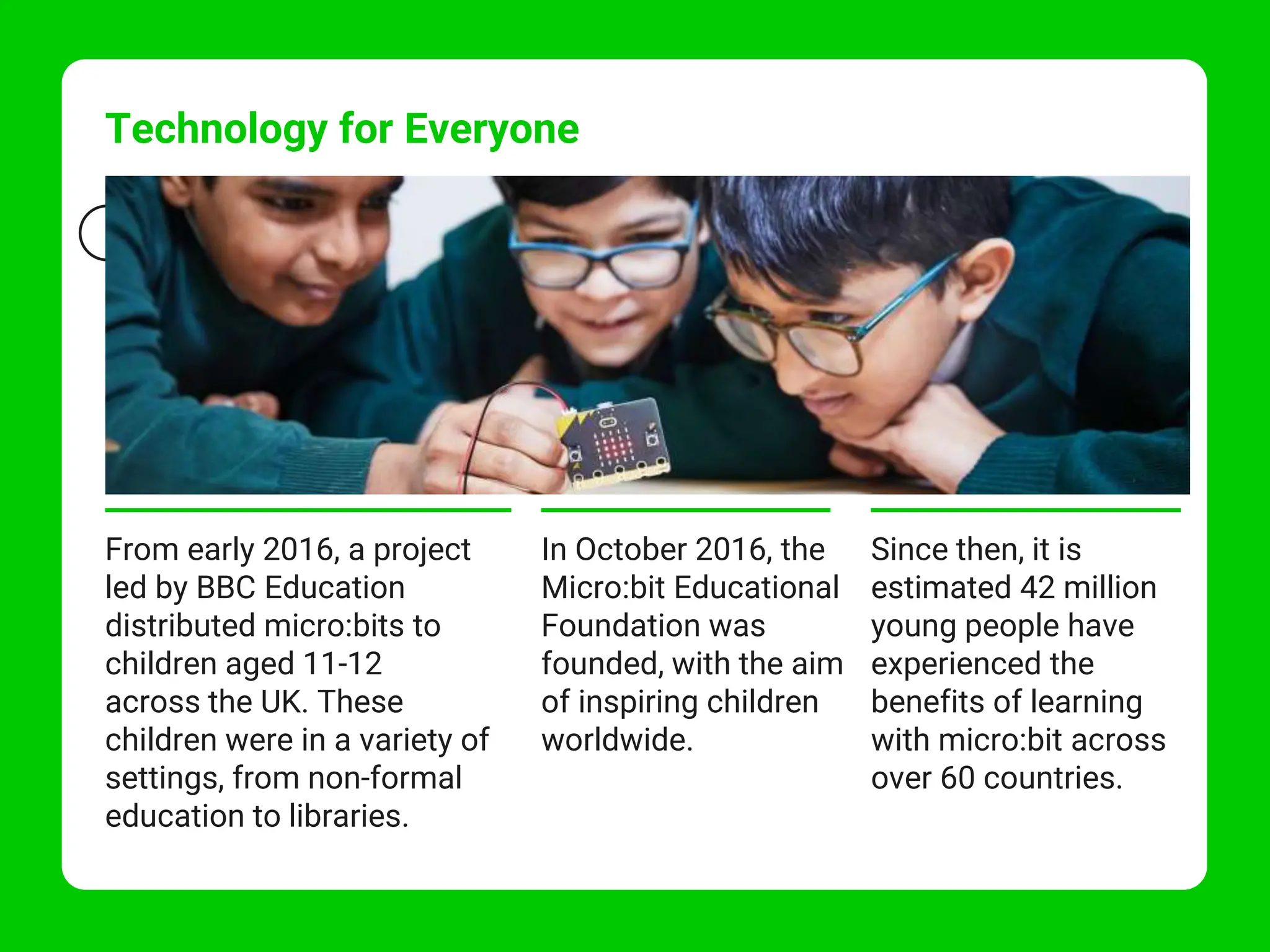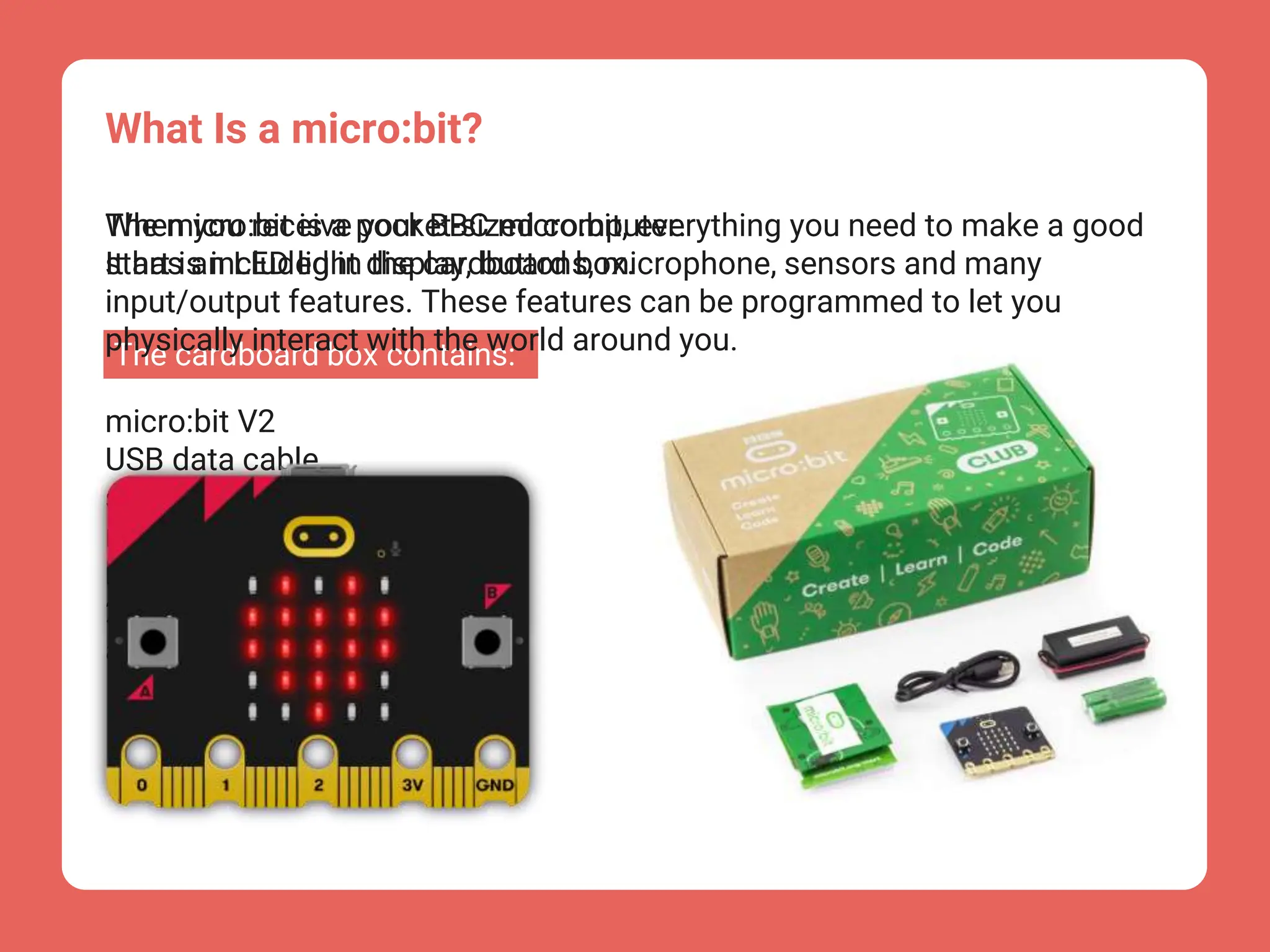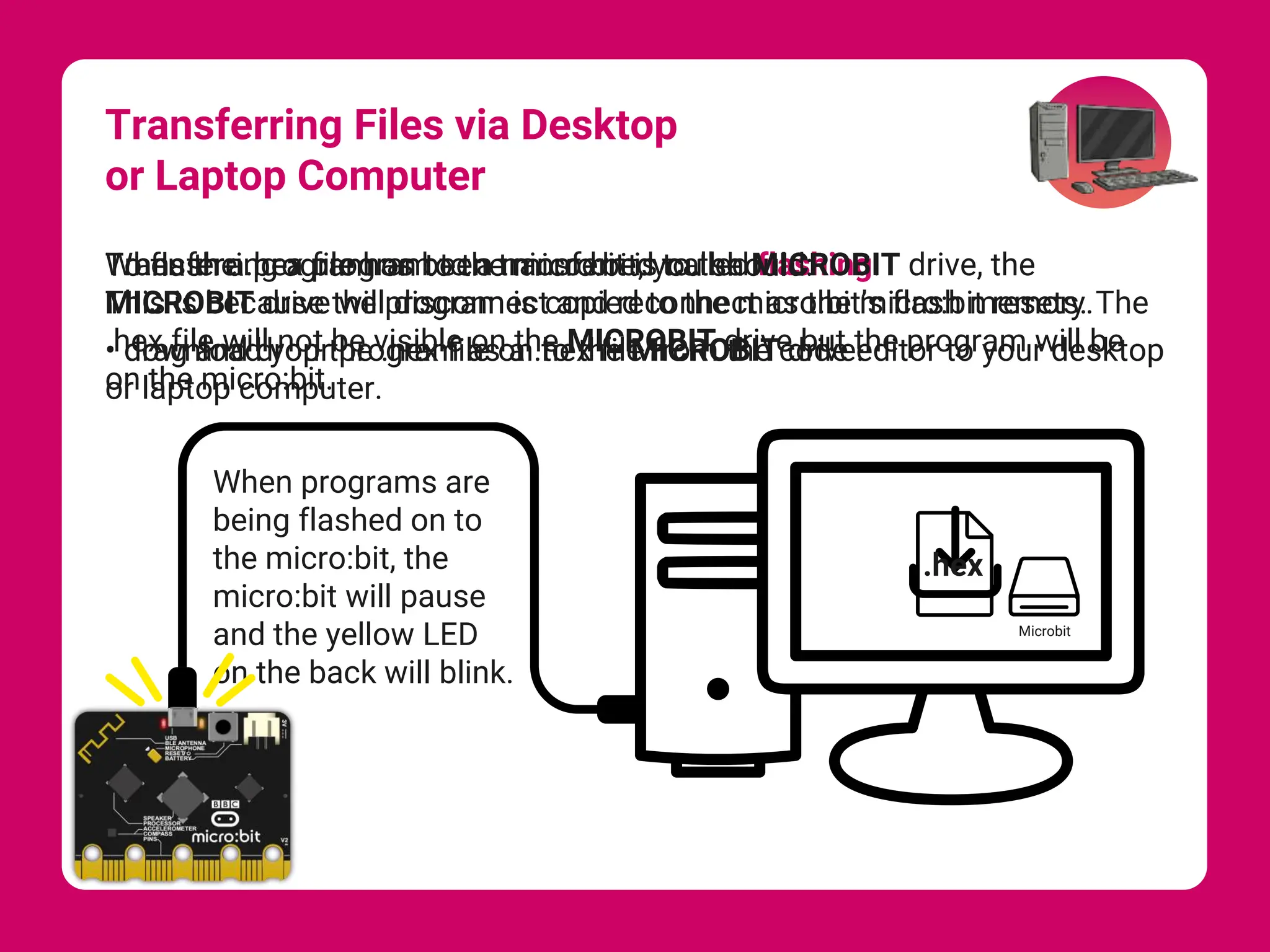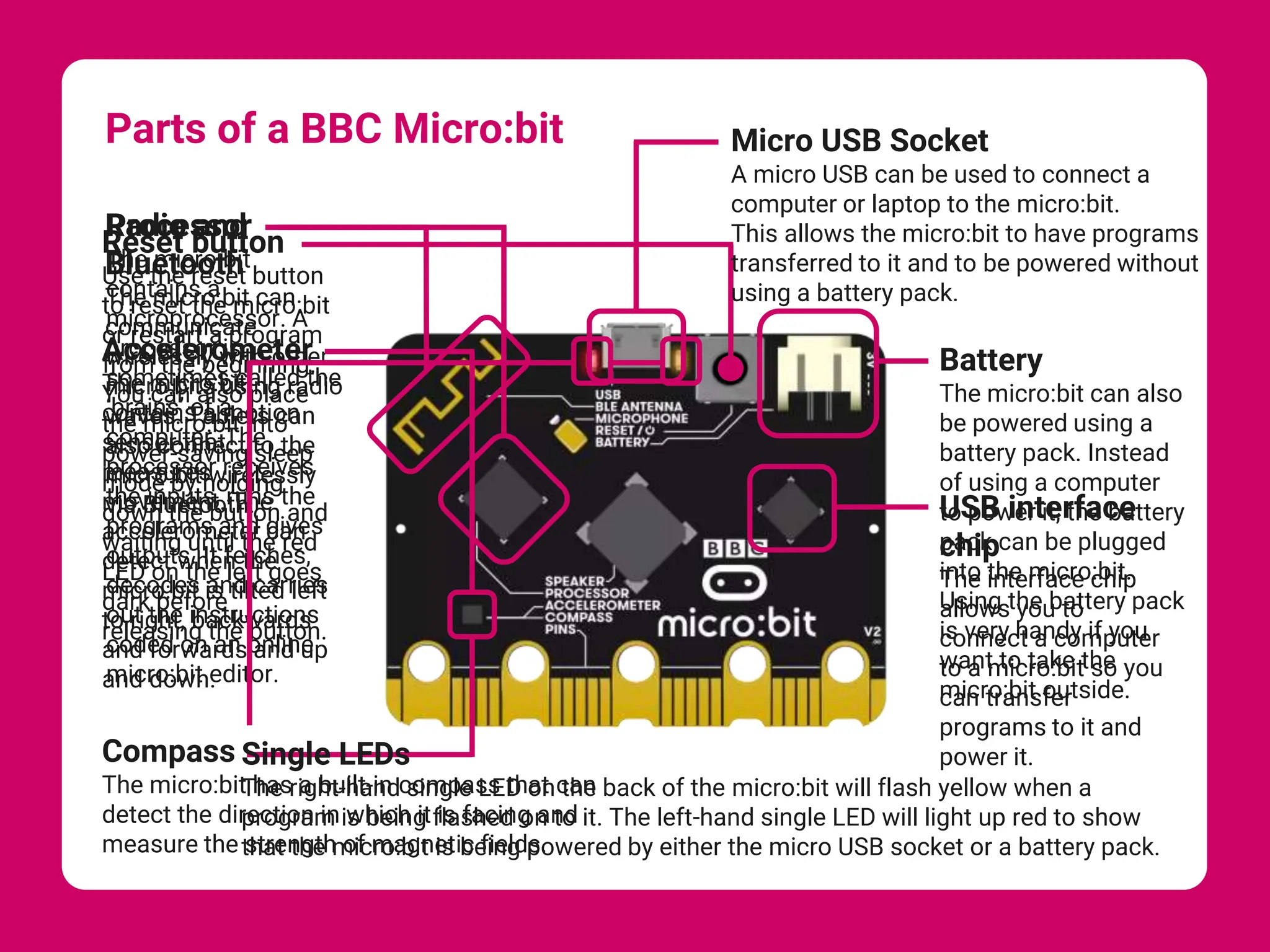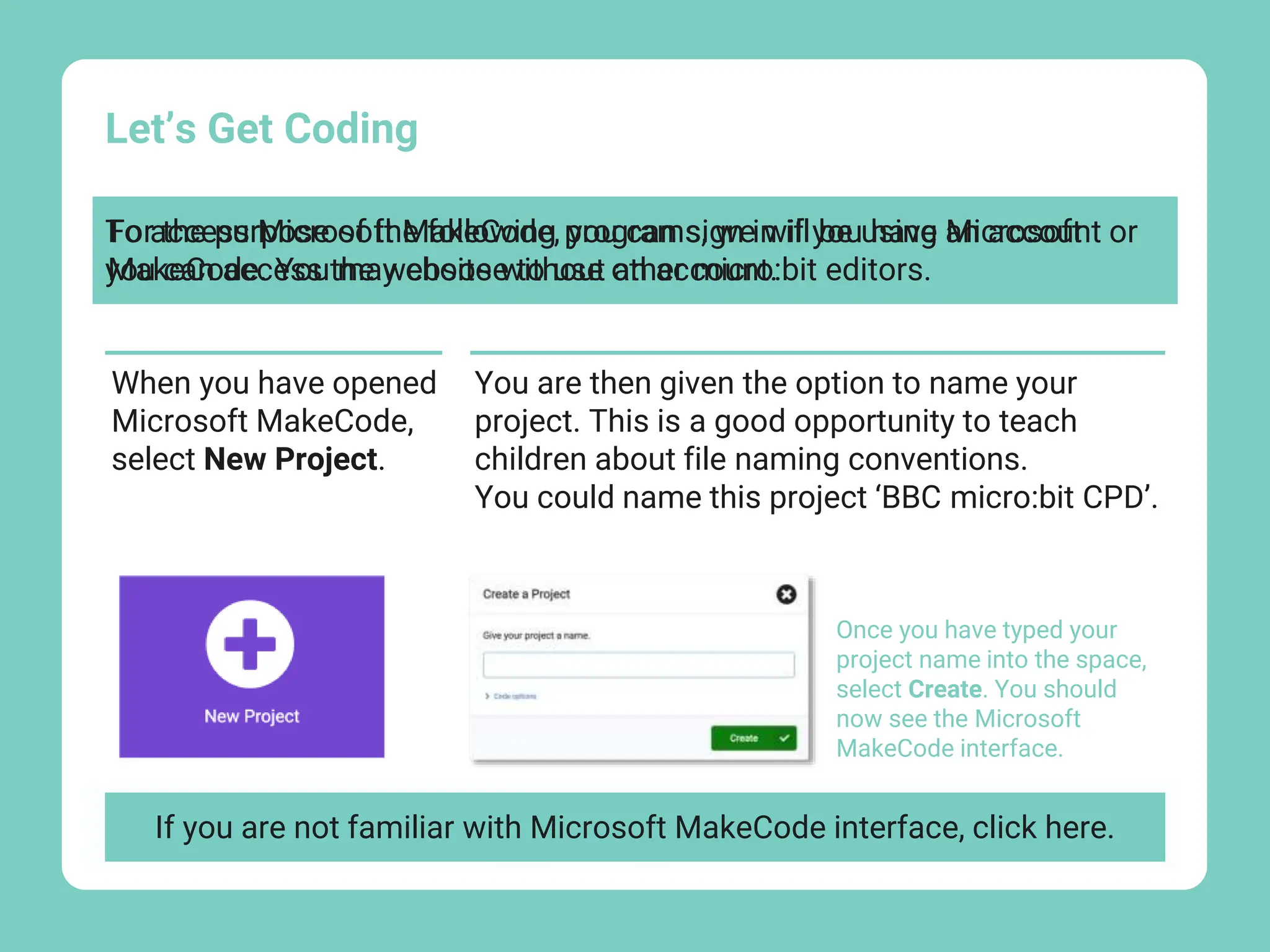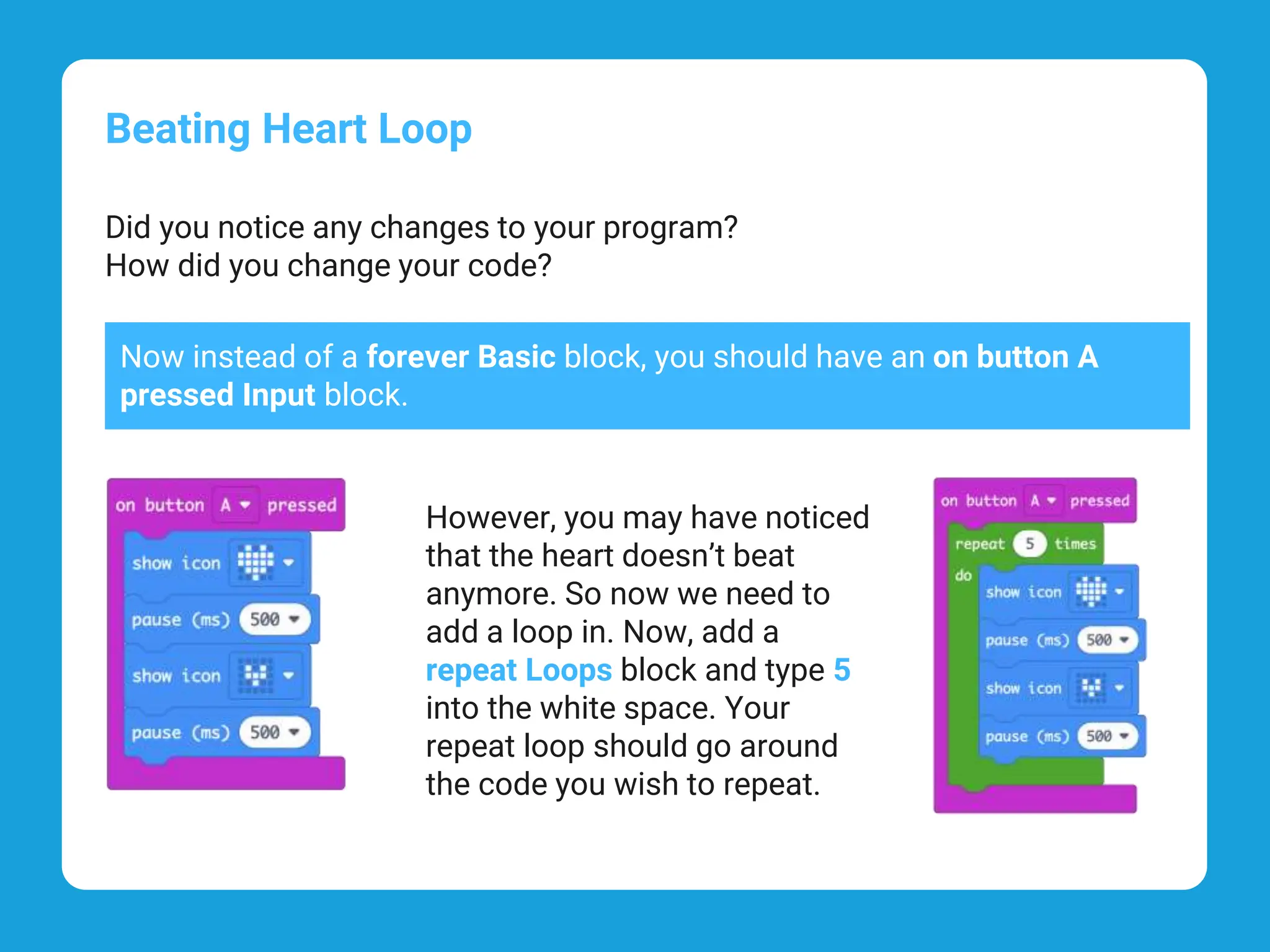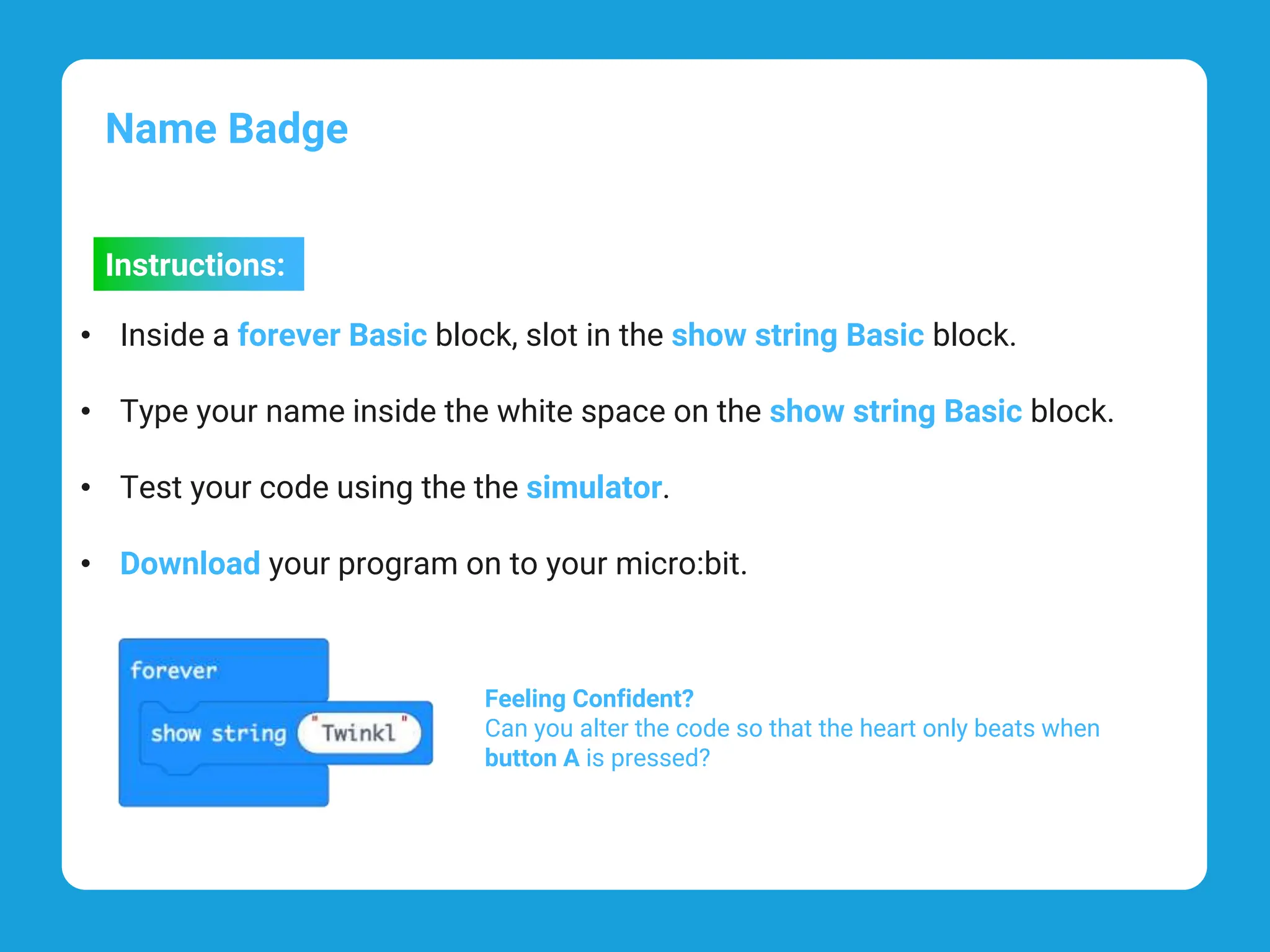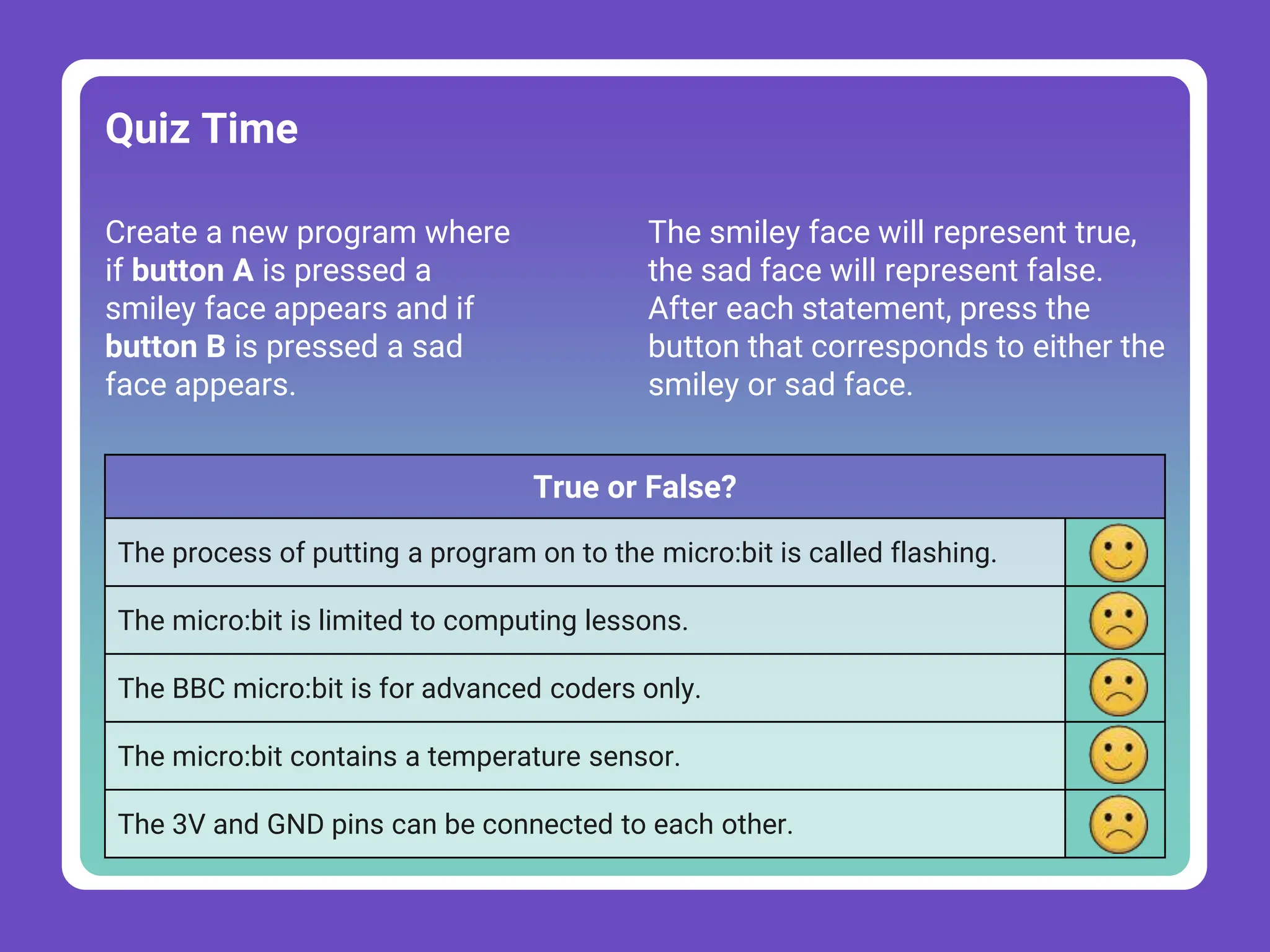The Micro:bit Educational Foundation is a nonprofit organization that aims to inspire children to create their digital future through technology. Originally a BBC initiative, the micro:bit is a small, programmable computer that was distributed to UK children aged 11-12 starting in 2016. In October 2016, the Micro:bit Educational Foundation was founded to inspire children worldwide through learning with micro:bits. It is estimated that over 42 million young people have experienced using micro:bits across over 60 countries since 2016.

